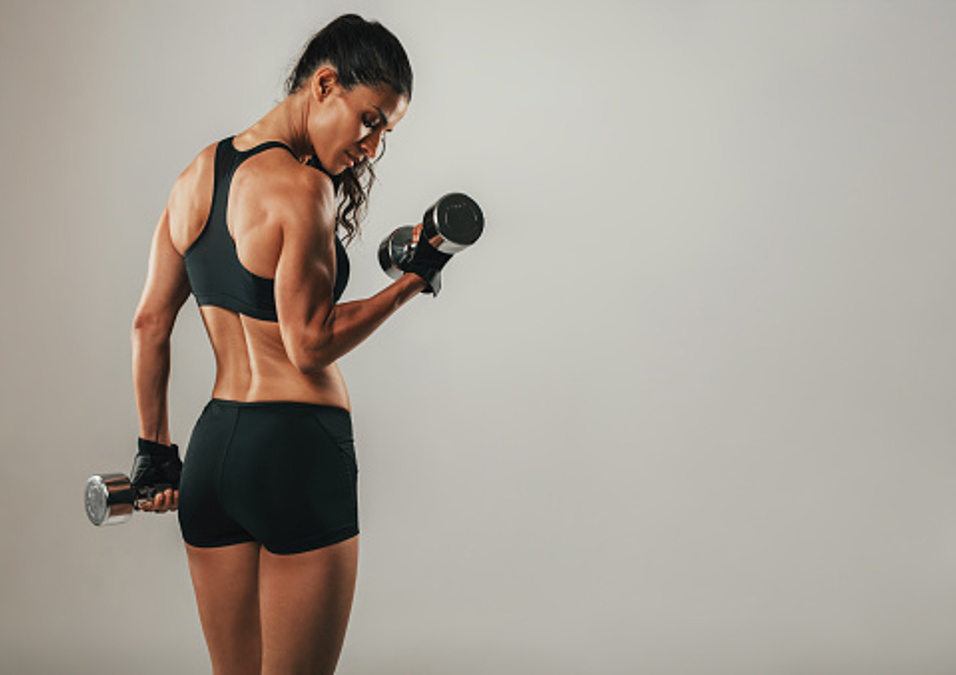The opinions shared in the GymNation blog articles are solely those of the respective authors and may not represent the perspectives of GymNation or any member of the GymNation team.
Add This to Your Workout: Try These 4 Dumbbell Moves for Strength Training

SIGN UP FOR YOUR FREE DAY PASS TODAY!
Including strength training in your fitness routine is crucial for reaping numerous health benefits, as emphasized by Jenni Tardiff, a master trainer at The Gym Group.
Her point is hard to argue with, considering lifting weights can strengthen your muscles and bones, boost your metabolism and even improve your mood. But where should you start, if the weights area is out of your comfort zone?
Try Tardiff’s four-move full-body dumbbell routine, which can be done at home or in a quiet corner of the gym.
It takes 30 minutes and targets a wide range of muscles, including those found in your legs, arms, back and core.
JENNI TARDIFF'S FOUR-MOVE DUMBBELL WORKOUT GUIDELINES
- Goblet squat: 3 sets of 12-15 reps
- Chest press: 3 sets of 12-15 reps
- Bent-over row: 3 sets of 12-15 reps
- Alternating lunge: 3 sets of 10 reps per leg
Perform the exercises consecutively as described above.
Complete all sets, repetitions, and rest periods for one exercise before moving on to the next.
For instance, begin with 12-15 goblet squats, rest for 60-120 seconds, then repeat for two additional sets.
Once you have completed all three sets, proceed to the chest press.
1. GOBLET SQUAT
Exercise Details:
- Sets: 3
- Repetitions: 12-15
- Rest Between Sets: 60-120 seconds
Instructions:
- Begin by standing with your feet shoulder-width apart, grasping a dumbbell close to your chest with both hands.
- Lower into a squat position while maintaining a straight back, knees pushed outward, and chest lifted.
- Push back up through your heels to return to the initial stance.
According to Tardiff, goblet squats are ideal for novices, focusing on lower-body muscles and enhancing proper squat technique.
The additional weight provides a challenge, aiding muscle development and enhancing overall stability.
2. CHEST PRESS
Sets: 3 Reps: 12-15 Rest: 60-120 seconds
To perform the dumbbell chest press:
- Lie on your back on a weight bench or the floor.
- Hold a dumbbell in each hand with palms facing each other and arms straight above your chest.
- Lower the dumbbells slowly to chest level without flaring your elbows.
- Push back up to the starting position.
According to Tardiff, the dumbbell chest press enhances upper-body strength and endurance, easing daily tasks and fostering a balanced physique.
3. BENT-OVER ROW
Sets: 3 Reps: 12-15 Rest: 60-120 seconds
- Stand with your feet hip-width apart, holding a dumbbell in each hand.
- Hinge at your hips, keeping your back straight, and let the dumbbells hang directly beneath your shoulders. This is your starting position.
- Pull the dumbbells towards the bottom of your ribcage, squeezing your shoulder blades together and keeping your elbows back and close to your body.
- Control the dumbbells back to the starting position.
"Bent over rows target the muscles of the upper back.
Strengthening these muscles helps improve posture and reduces the risk of back pain, making it an essential exercise for beginners," says Tardiff.
4. ALTERNATING LUNGE
Sets: 3 Reps: 12-15 (on each leg) Rest: 60-120 seconds
- Stand with your feet shoulder-width apart, holding a dumbbell in each hand.
- Step forward with one foot, keeping your torso upright and lowering your hips until both knees are bent at a 90° angle.
- Push off your front foot, driving through the heel to return to the starting position, then repeat on the other leg.
"The lunge enhances lower-body strength, balance and flexibility, making it an excellent choice for beginners looking to develop a strong foundation," says Tardiff.
JENNI TARDIFF'S EXPERT ADVICES
Tardiff's primary recommendation for mastering this workout is to prioritize proper form above all else.
This approach ensures you engage the correct muscles and minimizes the risk of injury.
During your warm-up, consider practicing each exercise using only your body weight.
Once you feel confident with the movements, the next step is selecting the appropriate dumbbell weight.
Begin with lighter dumbbells to perfect your technique, then gradually increase the weight as necessary, she advises.
The dumbbell weight should present a challenge that allows you to complete 12 repetitions of each exercise, reaching a point of struggle by the 15th rep," Tardiff suggests.
If you find yourself able to perform more than 15 reps with proper form, it's time to increase the weight.
Following these guidelines will provide the necessary stimulus for your body to initiate transformative changes, enhancing muscle and bone strength.
BENEFITS OF STRENGTH TRAINING
"Weightlifting enhances bone density, helping to reduce the risk of osteoporosis and keeping your body strong. This is especially important as we age.
It also builds lean muscle mass [which increases your resting metabolic rate] and supports weight management," says Tardiff.
It’s not an exclusive pursuit for muscle-bound gym-goers either.
It’s brilliant for beginners.
Dumbbells are a great way to start your strength training journey as they are so versatile, allowing you to gradually progress the intensity of your workouts. And there are so many exercises you can perform making them very accessible.
Source: fitandwell
GET YOUR FREE TRIAL TODAY
















































































